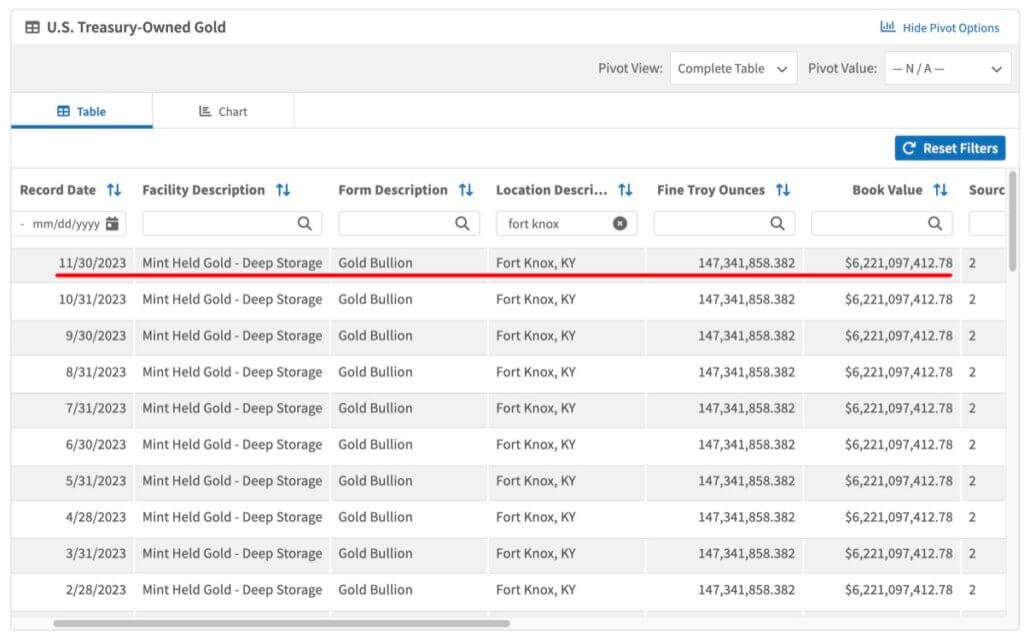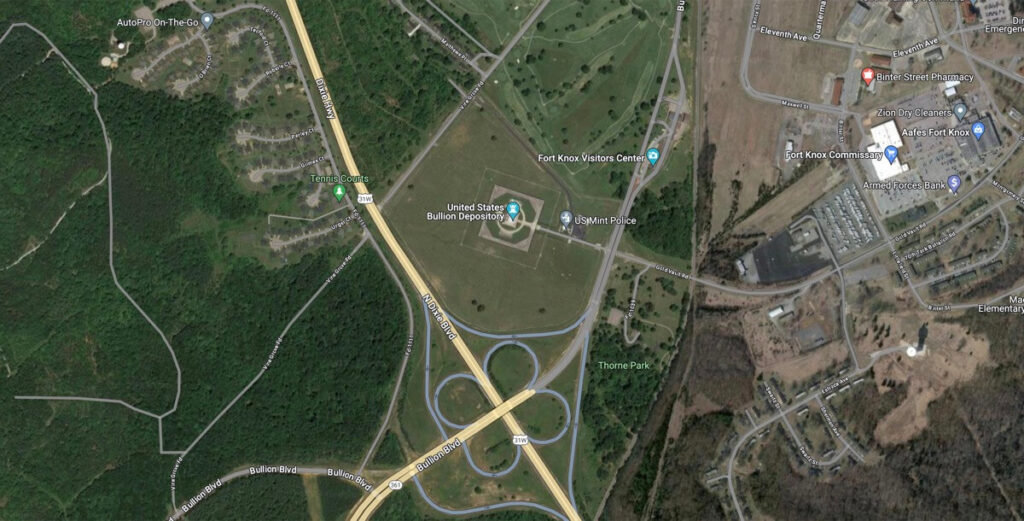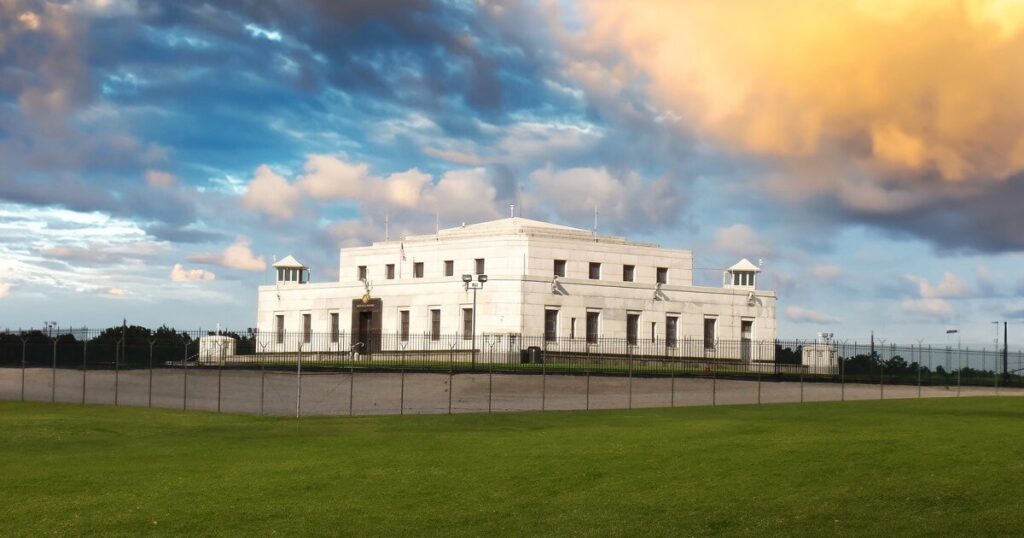
A Little History of Fort Knox
When and Why It Was Built
The construction of the Fort Knox vault began in 1935 on land transferred from the military to the Treasury, and was completed in 1936 at a cost of $560,000. With today’s inflation, that’d be around 12.2 million US dollars, or the price of a Lockheed Martin F-16 (without the missiles and whistles… and probably from the 90’s).
Let’s go down a little rabbit hole.
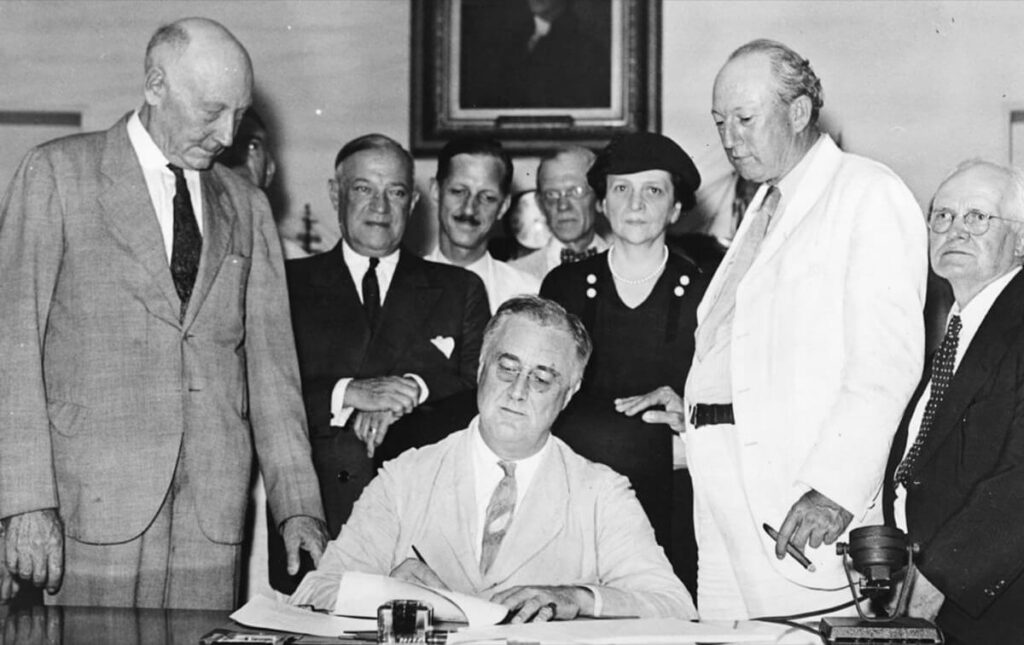
Two years before, in 1933, President Roosevelt ordered all gold coins and certificates of more than $100 to be turned in for other money. This was when the gold standard was paused, and currency was no longer backed by gold. Everyone was ordered to turn all of their gold bullion to the Federal Reserve for $20.67 per ounce – what a steal…quite literally.
It became popular to do a bit of “midnight gardening”. In other words, people began to bury their precious metals. These newly acquired assets allowed the Federal Reserve to further inflate the nation’s money supply. Eventually, President Nixon officially took the country off the gold standard in 1971.
Afterwards, it can be assumed that there was a lot of gold to store!
The United States Department of Treasury built the depository to house gold that was then stored at the Philadelphia Mint and New York Assay Office. The idea being that its previous location near the coast was prone to attack. During this time, tensions were heating up across Europe.
Congress, under President Franklin, passed the Neutrality Act. With the intention to keep the US out of a possible European war by banning shipment of war materials to those engaged in war. Well, in hindsight, things didn’t turn out so well. The U.S. involvement began shortly after, hence War World II.
The first shipments of gold arrived in 1937. The United States Post Office oversaw the deliveries, as the gold would be transported from postal trucks onto a special nine car train with the escort of municipal police. The train cars were armored and HEAVILY guarded. They even deployed decoy trains. The gold bars were then transferred from the trains cars into army trucks, before making its way to the bullion depository.
The second wave of gold shipments occurred in 1941. This required a lot of time, money, and military support.
The two shipments totaled more than 417 million troy ounces of gold, about two-thirds of the total gold reserves of the US.
How much gold? Literal tons.
The gold bars are similar in size and shape to a brick. With each measuring about 7 inches in length, 3.5 inches in width, and 1.75 inches in thickness. Each bar contains about 400 troy ounces of pure gold. In today’s gold market, each gold bar would run about $738,400.
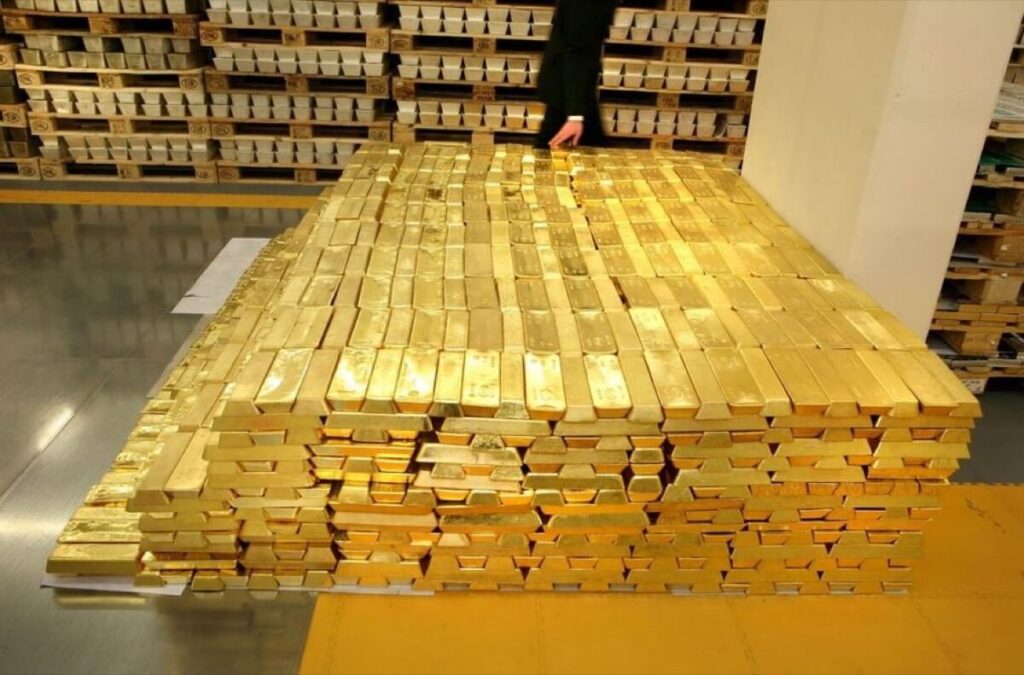
Can You Go Inside Fort Knox?
It depends.
The Fort Knox bullion depository or the overall base?
As for the depository, not even close. Those who try to sneak a peek inside the bullion depository get a first-class escort into a cell.
Outside of those who work for the US Treasury Department, only a few people have been inside Fort Knox’s gold vault. To this day, President Franklin, is the only president to visit the holy grail of gold reserves. A second inspection was made in 1974 by a group of journalists and members of Congress. They were invited to ease the nerves of the public after rumors of the gold being removed. The third and latest inspection was in 2017. Treasury Secretary Steve Mnuchin, along with Kentucky Governor Matt Bevin, and other elected officials were able to catch a glimpse inside the gold vaults.
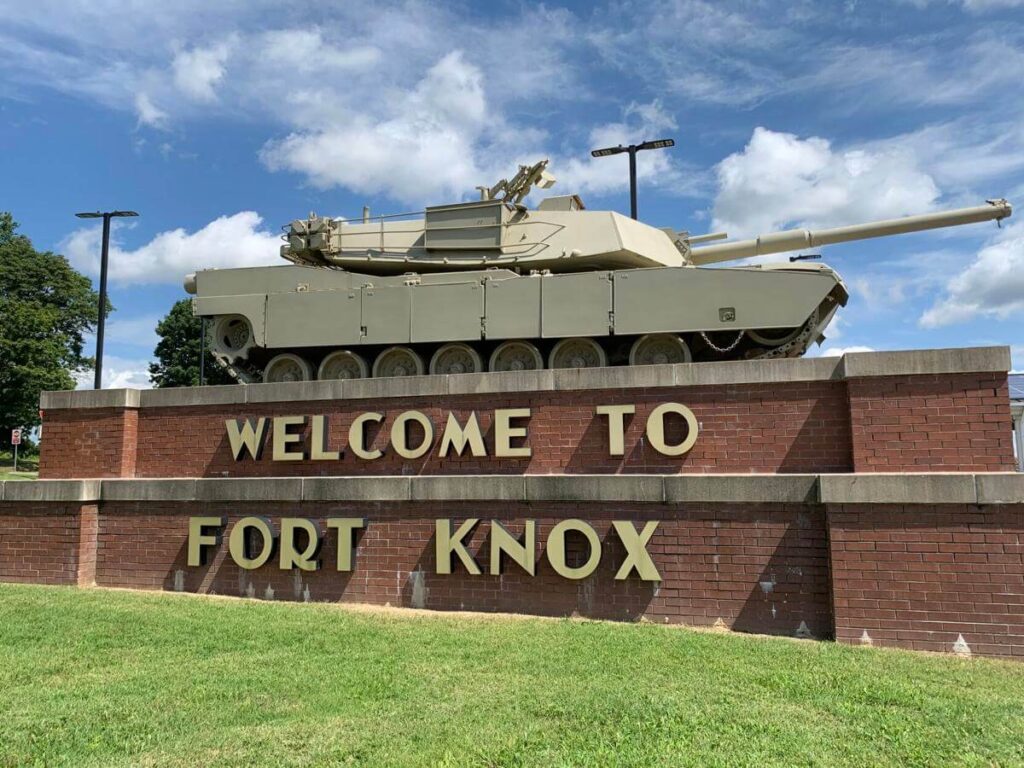
Construction and Security
A list of materials used to construct Fort Knox’s bullion depository:
- Granite – over 16,000 cubic feet
- Concrete – over 4,200 cubic yards
- Reinforced Steel – 750 tons (or around 107 adult African bush elephants)
- Structural Steel – 670 tons (about 96 adult African bush elephants)
There’s not much known about the construction of the building, but it is public knowledge that the outer wall is 4-foot thick and made of granite-lined concrete. Also, there are elevated guard boxes at the four corners of the building.
Below the building lies the vault. It is less than 4,000 square feet, and two stories high. The vault door weighs 22 tons, yep, just the door. It’s blast-proof, drill resistant, and can probably withstand most things on this earth. That’s not the only security.
The gold bars are stored behind smaller 27-inch-thick vault doors.
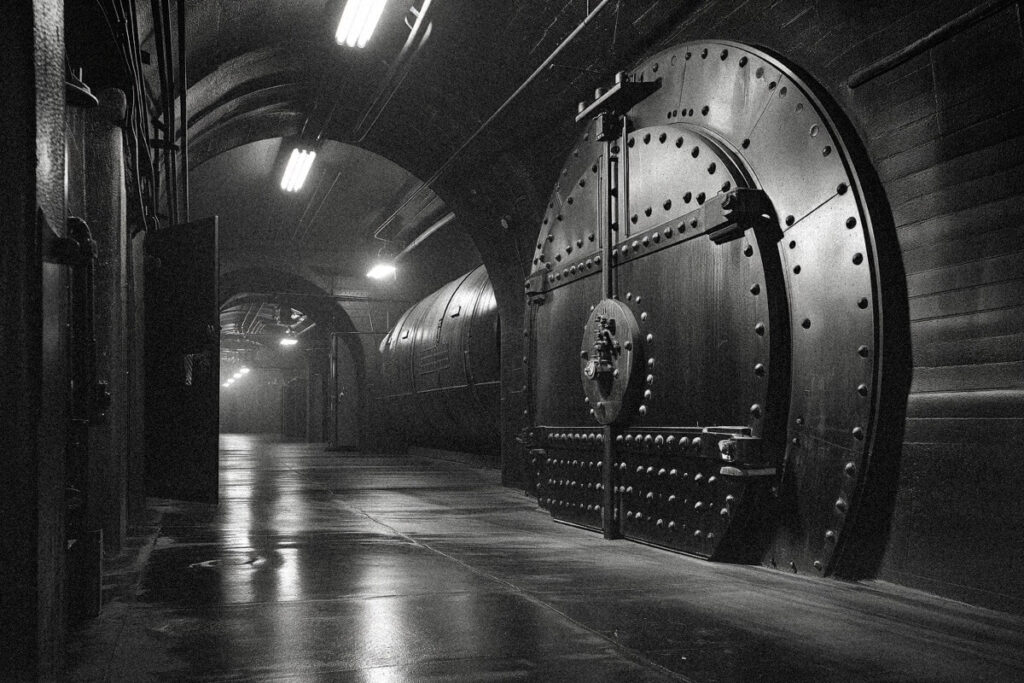
There is not one member of authorized personnel who can enter the vault alone. It takes multiple combinations to open the gold vault, and not one person knows all of them. And the combinations change on a daily basis. Not to mention, the multiple alarms being set off in the process.
Rather, if you plan to visit Fort Knox, you can see the General George Patton Museum of Leadership, which is open to the public all year round.
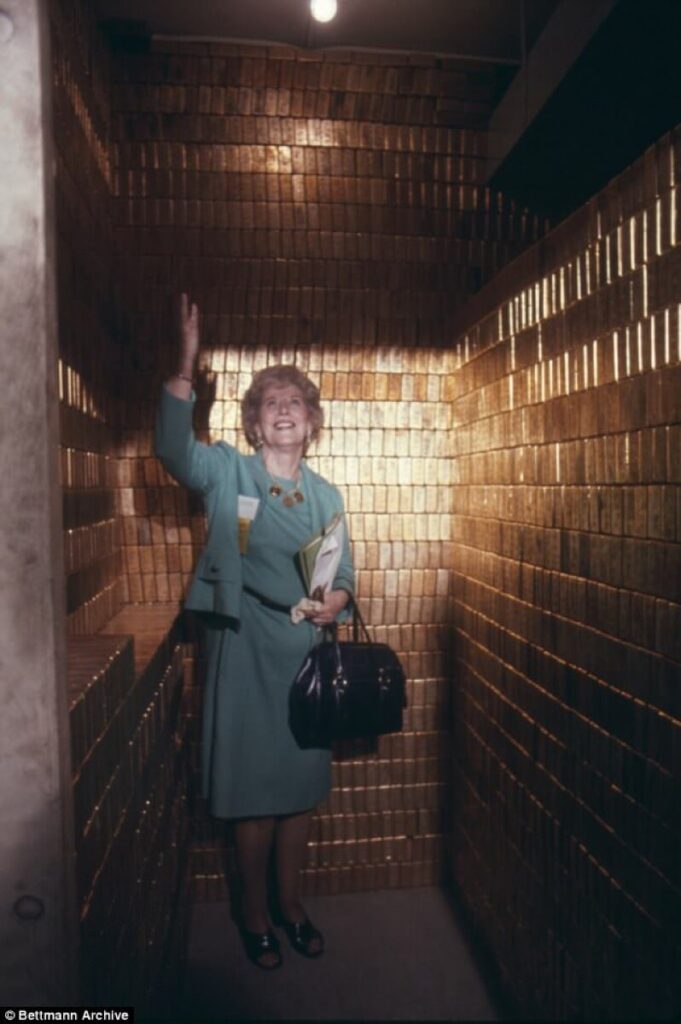
Other Cool Items Stored in Fort Knox
The most secure gold depository in the world is not home to only gold, it’s held some of the most important documents and historical artifacts in history.
During World War II, the Declaration of Independence, Constitution, and Bill of Rights were stored in Fort Knox. The founding documents were returned in 1944 to Washington D.C.
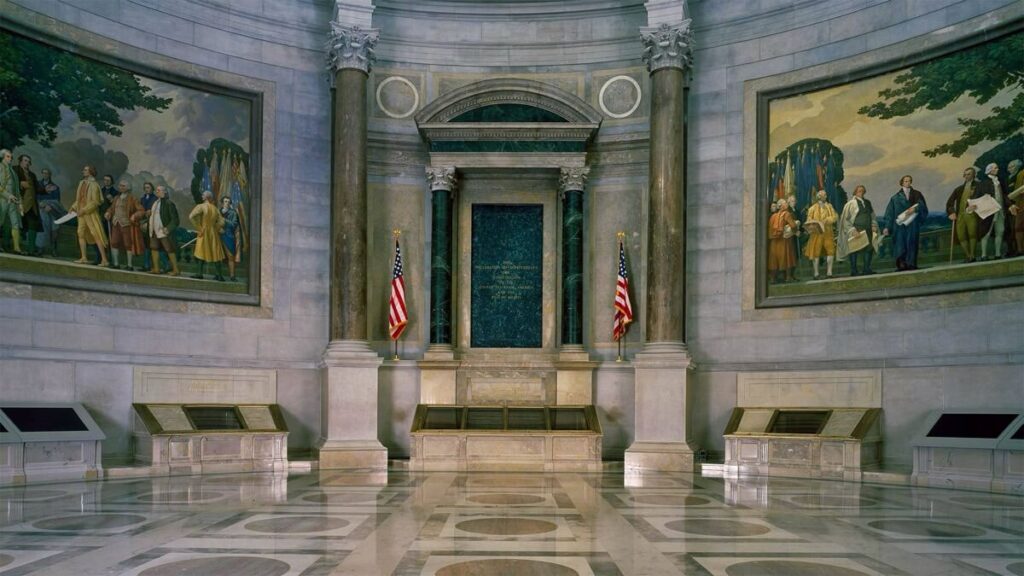
In 1939, a copy of the Magna Carta was brought over to the United States for the World’s Fair. WW2 began a soon after, and so the document was sent to Fort Knox for safekeeping. It was returned to England in 1947.
How Much Morphine is in Fort Knox?
Morphine? Fort Knox? What?
This also had to do with war.
Records of most recents numbers (from the 90’s), report over 68,000 pounds. Apparently, it was enough to cover the nation’s needs for a year… during the 90’s. Opium use has only gone up, so it’s unlikely that’d cover the nation’s present needs.
In 1955, during the Cold War, the U.S. military stockpiled opium and morphine sulfate in case of a rainy day… like foreign medical supplies being cut off or a bit of a nuclear exchange happening.
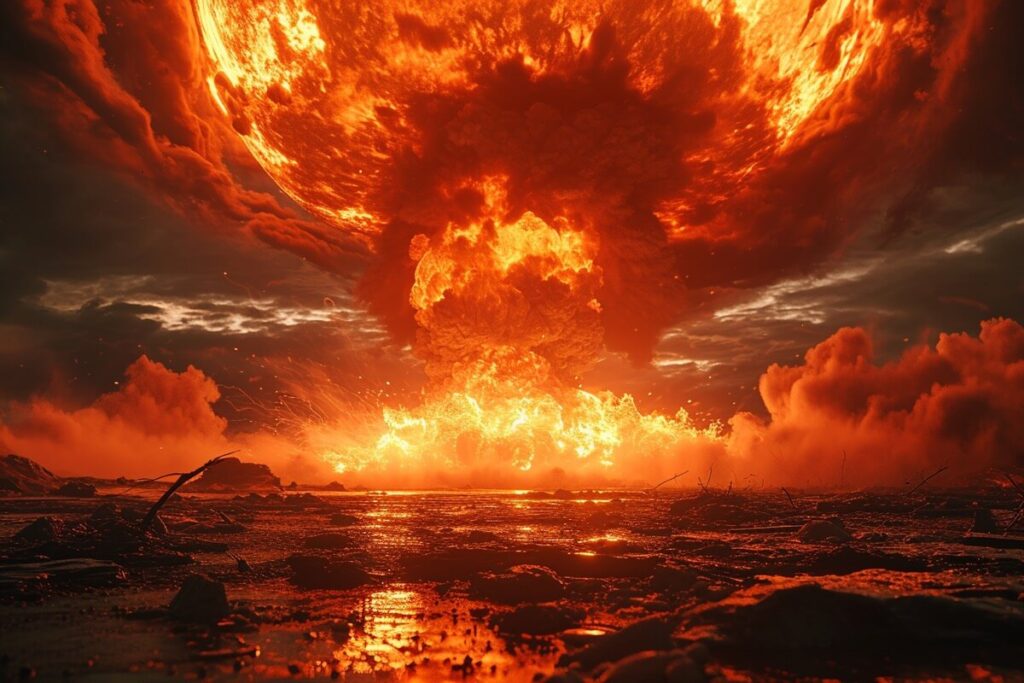
In 1993, the government spent millions refining the opium into morphine, and it’s still stashed in their vaults to this day.
Surprisingly, Not Every Nation Has Gold Reserves
America has the largest gold reserves by a long shot – no one comes close.
There are a handful of countries with no gold reserves, and this includes Canada.
Canada has been selling off its gold reserves since the 1960s, and emptied their vaults by the 2000s.
The reasoning is not very clean, however, it may have to do with digitizing their currency.
From the words of former Governor of the Bank of Canada (their version of the Federal Reserve) – David Dodge
“… [What] we would like to do, globally and [in Canada], is to reduce transaction costs… [The] Bank and the Department of Finance are working hard… on this issue of digitalizing our financial system to reduce transaction costs… The financial system is interested in digitizing the Canadian dollar.”
Canada is doubling down on digital currencies that can infinitely controlled by central planners. In other words, buy more gold!
Is there Really Gold in Fort Knox?
According to government reports, gold is indeed present. The question then becomes, how reliable do you find their word to be? Do you trust the government and their self reporting? During President Donald Trump’s administration in 2017, Secretary Mnuchin visited Fort Knox and shared the following few words on twitter:
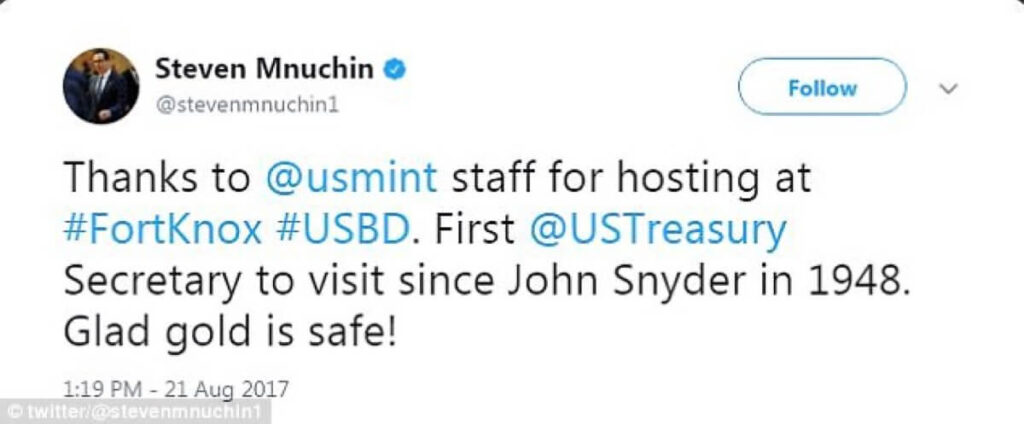
What We Can Learn From Fort Knox
If the U.S. government is concerned about storing gold, then you should be too. By the looks of it, the price of gold doesn’t seem to be coming down any time soon, or ever. In 2023, gold hit new all time highs amid government rate hikes and record inflation.
As the saying goes, the best time to start stacking was yesterday. The next best time is now.
Also, stacking gold can be fun as you make it, or strictly part of diversifying a portfolio. If you’re not so concerned about looks or design, then gold bars are a perfect investment for you. It’s a sure way to get more ounces for less, compared to buying individual coins.
Gold bars are great for pure stacking reasons, but coins can be a lot of fun to look at and collect. Get the best of both worlds – the asset and the collectibility.
Whatever you decide to do, buy from a reputable dealer and happy stacking!
This post is written by Scottsdale Mint on December 28, 2023.

